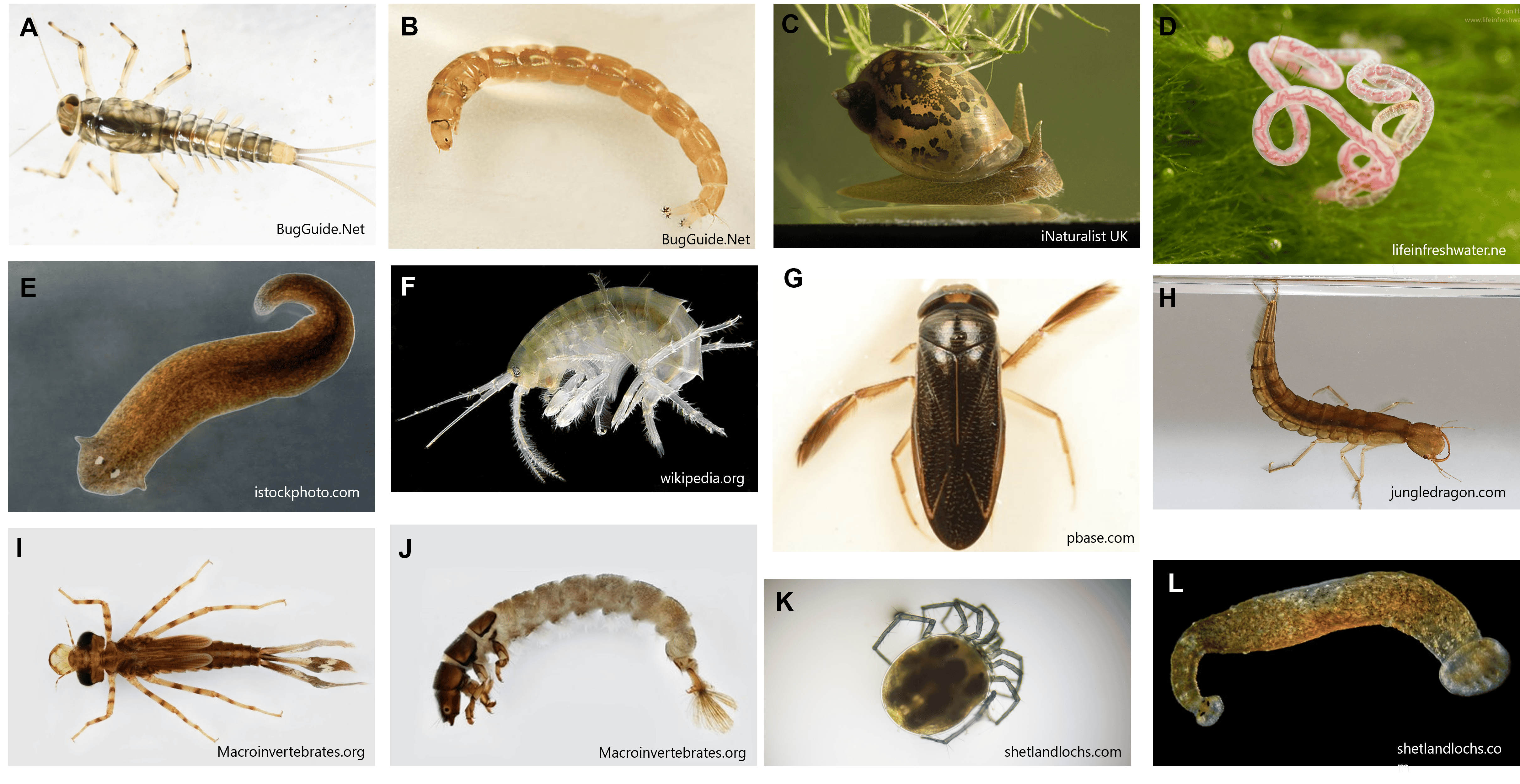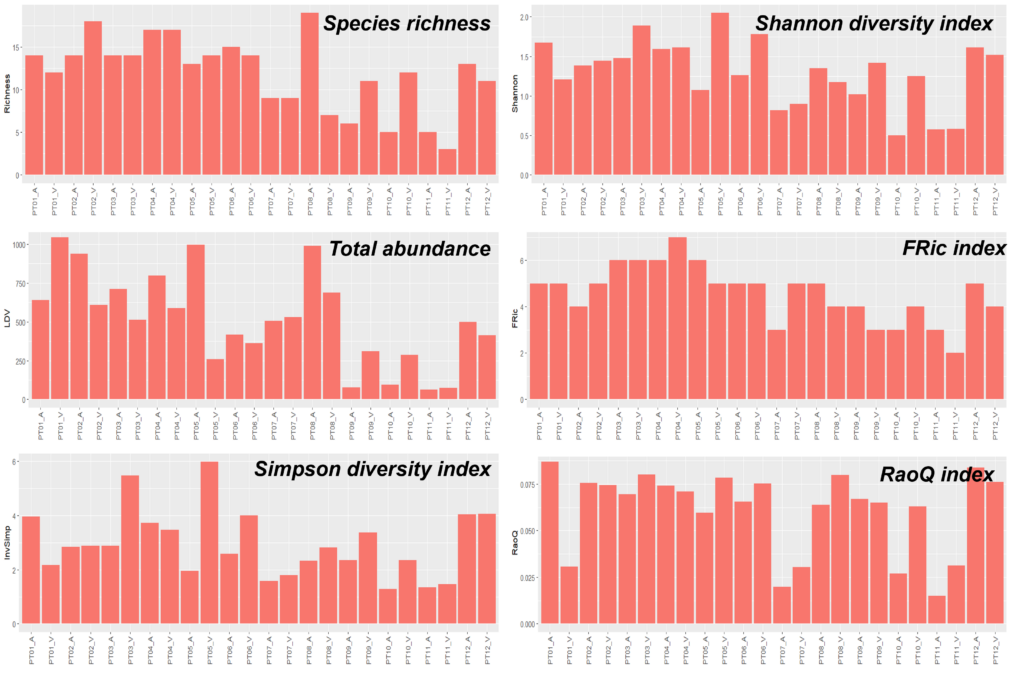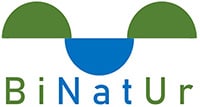Understanding Changes in Macroinvertebrate Communities Across Europe Through Six Diversity Metrics and Indexes
By Vladimíra Dekanová and Silvia Martín Muñoz
Biodiversity indexes are used to quantitatively estimate the biological variability of a space in order to be able to compare this diversity among places or across time. Both the species richness (i.e., the total number of species in a community) and the evenness (i.e., number of individuals of each species in a community) have to be considered to understand how the species are distributed. Another component of biodiversity that can be studied is the distance in the phylogenetic tree between these species. Taxonomic indices are therefore useful to establish the relation and proximity between organisms found at a certain ecosystem (alpha diversity), at different ecosystems or along an environmental gradient (beta diversity) or across a whole landscape (gamma diversity). Biodiversity indices are a powerful tool to assess the state of ecosystems. The abundance of pollution or degradation tolerant species is a signal warning of disturbances in the ecological communities. These species can be used as indicators of environmental stress and their monitoring is therefore crucial to promptly intervene in the mitigation of the damages.

The most abundant macroinvertebrate taxa determined in this project: A) Ephemeroptera, B) Diptera, C) Gastropoda, D) Oligochaeta, E) Turbellaria, F) Malacostraca, G) Hemiptera, H) Coleoptera, I) Odonata, J) Trichoptera, K) Hydracarina, and L) Hirudinea.
One of the main research objectives of the project is to study aquatic macroinvertebrates and their link to the ecosystem services in aquatic nature-based solutions (aquaNBS) since they represent a useful ‘indicator community’ for assessing the condition of freshwaters. AquaNBS are expected to support biodiversity through the restoration or construction of new habitats. To fulfil this task, we need to understand the drivers of the macroinvertebrate community and the changes in the community structure, species composition, richness and diversity. We conducted in-situ empirical research to study aquatic invertebrate biodiversity in aquaNBS in five European countries – covering Atlantic and Mediterranean (Portugal, Lisbon), western and middle temperate (Belgium, Antwerp and Poland, Poznan) and boreal regions (Finland, Helsinki). Based on determined macroinvertebrates, we calculated species richness, evenness and biodiversity metrics listed here:
1. Species Richness (S)
In general, species richness is the number of different species represented in an ecological community, landscape or region. Richness is a simple measure, so it has been a popular diversity index in ecology, where abundance data are often not available, calculated as the number of species per sample. The more species present in a sample, the ‘richer’ the sample. It is important to remember that species richness as a measure on its own takes no account of the number of individuals of each species present. Thus, it gives as much weight to those species which have very few individuals as to those which have many individuals. It is often used as a criterion when assessing the relative conservation values of habitats or landscapes.
2. Total Abundance
Total abundance is calculated as the total number of individuals of a species or type present in a given area, in a given ecosystem or within a particular habitat. A species is considered abundant when it has a high population relative to the size of the area it inhabits.
3. Simpson Diversity index (D)
The Simpson index was introduced in 1949 by Edward H. Simpson to measure the degree of concentration when individuals are classified into types. Index measures the probability that two individuals randomly selected from a sample will belong to the same species (or some category other than species). The value of Simpson’s D ranges from 0 to 1, with 0 representing infinite diversity and 1 representing no diversity, so the larger the value of D, the lower the diversity. For this reason, Simpson’s index is usually expressed as its inverse (1/D) or its compliment (1-D) which is also known as the Gini-Simpson index.
4. Shannon Diversity Index (H)
The Shannon index is a popular diversity index in ecological literature, where it is also known as Shannon’s diversity index or Shannon–Wiener index. The Shannon index (H) is related to the weighted geometric mean of the proportional abundances of the types. The index is calculated based on the total number of species (R), and the proportion or relative abundance of the i-th species in the community (pi). In ecology, pi is often the proportion of individuals belonging to the i-th species in the dataset of interest. When all species in the data set are equally common, all pi values = 1/R and the Shannon-Weiner index equals ln(R). The more unequal the abundance of species, the larger the weighted geometric mean of the pi values, the smaller the index. If abundance is primarily concentrated into one species, the index will be close to zero.
5. FRic Index
The FRic index, named “functional richness”, represents the amount of functional space filled by the community. Index is exclusively based on the extreme trait-values developed by Villéger et al. (2008). Definition says that it is the volume of multidimensional space occupied by all species in a community within functional space, where the functional space is defined as a multidimensional space where the axes are functional traits along which species are placed according to their functional trait values. Thus, assessing the FRic index values can provide important information on the shifts in the functional volume (or total range of traits values) occurring in the ecological communities following human activities. The index is calculated based on the niche space filled by the species within the community (SF) and the absolute range of the character (R).
6. RaoQ Index
Rao’s quadratic entropy is a measure of diversity of ecological communities defined by Rao (1982) and is based on the proportion of the abundance of species present in a community and some measure of dissimilarity among them. index that incorporates both species relative abundances and a measure of the pairwise distances between species.
Indexes Help Compare Different Environments
We will calculate the above-listed diversity metrics and indexes for every country and then compare indexes within countries to see similarities and dissimilarities in invertebrate communities. Determined communities will be compared between two types of freshwaters – ponds and brooks, and also between two types of habitats – permanent and temporary. Crucial part of this task will be comparison of communities in vegetated and more artificial parts of the sampling sites; thus, we will know if the nature-based solutions in the sampled sites have an impact on the communities.
Community structures of invertebrates can be also affected not only by human activity (represented in our study by NBS), but also by local environmental conditions. From this reason, we will also test the effect of physico-chemical parameters of water on community structures. All of these comparisons will be done for every country and then compared among all countries. With these results we will see what are the differences and similarities in invertebrate communities across Europe in abundance, richness and family diversity, and the effect of nature-based solutions on these ecosystems.

Preliminary results of 12 localities (divided as vegetated and artificial part) from Portugal based on the six diversity indexes.
References
Andermann, T., Antonelli, A., Barrett, R. L., & Silvestro, D. (2022). Estimating alpha, beta, and gamma diversity through deep learning. Frontiers in plant science, 13, 839407.
Carignan, V., & Villard, M. A. (2002). Selecting indicator species to monitor ecological integrity: a review. Environmental monitoring and assessment, 78, 45-61.
Dallas, H. F. (2000). Ecological reference condition project: Field-manual. General information, catchment condition, invertebrates and water chemistry. National Biomonitoring Programme for Riverine Ecosystems: Report Series, (10).
European Union 2021. The EU and nature-based solutions. https://ec.europa.eu/info/research-and-innovation/research-area/environment/nature-based-solutions_en
Frantzeskaki, N., McPhearson, T., Collier, M. J., Kendal, D., Bulkeley, H., Dumitru, A., … & Pintér, L. (2019). Nature-based solutions for urban climate change adaptation: linking science, policy, and practice communities for evidence-based decision-making. BioScience, 69(6), 455-466.
Gaston, K. J., & Spicer, J. I. (2013). Biodiversity: an introduction. John Wiley & Sons.
Lu, X., Zang, R., Ding, Y., Huang, J., Yang, X., & Zhou, Y. (2015). Effects of tending on the functional traits and functional diversity of woody plants in a secondary tropical lowland rain forest. Biodiversity Science, 23(1), 79.
Mouillot, D., Graham, N. A., Villéger, S., Mason, N. W., & Bellwood, D. R. (2013). A functional approach reveals community responses to disturbances. Trends in ecology & evolution, 28(3), 167-177.
Rao, C. R. (1982). Diversity and dissimilarity coefficients: a unified approach. Theoretical population biology, 21(1), 24-43.
Reynoldson, T. B., & Metcalfe-Smith, J. L. (1992). An overview of the assessment of aquatic ecosystem health using benthic invertebrates. Journal of aquatic ecosystem health, 1, 295-308.
Simpson, E. H. (1949). Measurement of diversity. nature, 163(4148), 688-688.
Tuomisto, H. (2010). A diversity of beta diversities: straightening up a concept gone awry. Part 1. Defining beta diversity as a function of alpha and gamma diversity. Ecography, 33(1), 2-22.
Villéger, S., Mason, N. W., & Mouillot, D. (2008). New multidimensional functional diversity indices for a multifaceted framework in functional ecology. Ecology, 89(8), 2290-2301.
You M., Vasseur L., Regniere J. & Zheng Y. (2009). The Three Dimensions of Species Diversity. The Open Conservation Biology Journal, 3, 82-88.

Project funders:
This research was funded through the 2020-2021 Biodiversa and Water JPI joint call for research projects, under the BiodivRestore ERA-NET Cofund (GA N°101003777), with the EU and the funding organisations The Research Foundation - Flanders (FWO), Belgium; Academy of Finland (AKA), VDI/VDE-IT, Germany; National Science Center (NCN), Poland and Fundação para a Ciência e Tecnologia (FCT), Portugal

